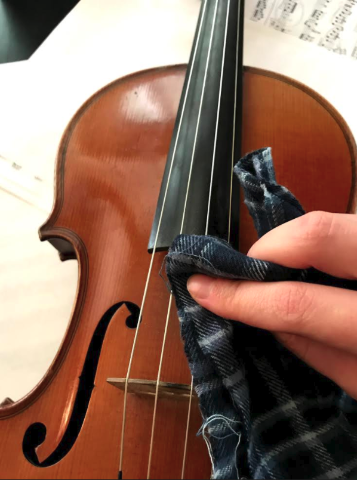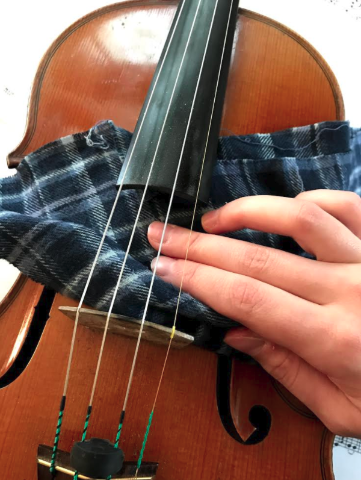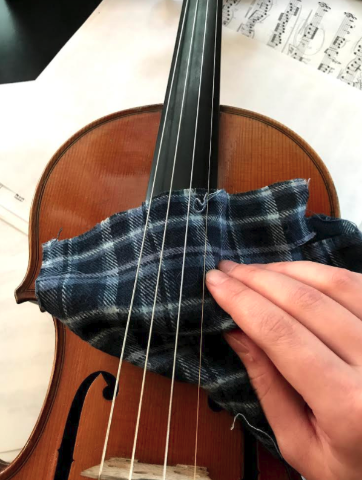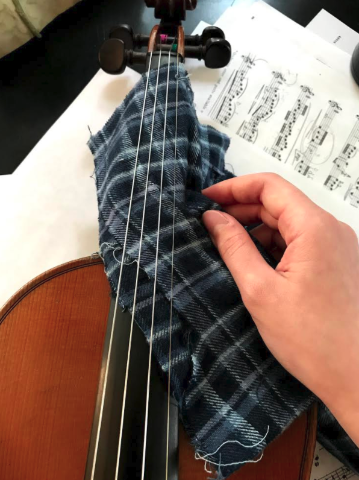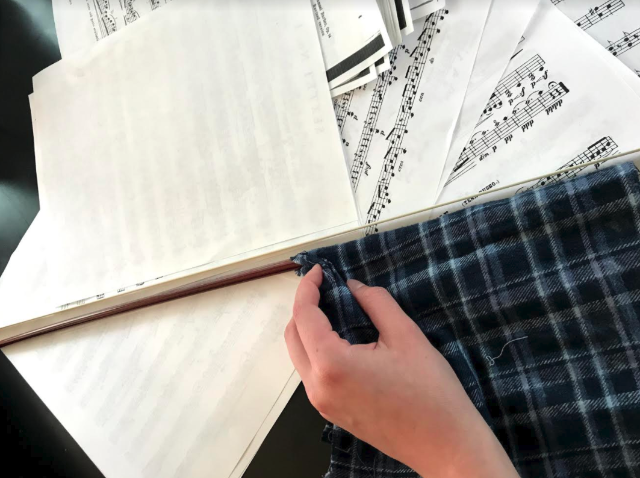Violins, violas, cellos, and double basses make up the orchestral string family. These instruments are finely crafted, and must be properly taken care of in order to maintain their beautiful sound, as well as their attractive aesthetic.
There are a few simple steps that you can take regularly that will keep your string instrument looking and sounding as good as ever.
CLEAN YOUR INSTRUMENT
Musical instruments get a lot dirtier than you might think. String instruments get especially dirty since our bows require rosin in order to make a sound, and the rosin dust can get all over the bow stick and the body of the instrument, especially between the bridge and the fingerboard.
Because of this, you should always wipe down your instrument when you are finished playing with a soft, clean cloth. Start by wiping all four strings in the area between the bridge and the fingerboard, where all the rosin usually gathers.
After that, wipe the wood between the bridge and the fingerboard, as well as the area underneath the fingerboard.
Then clean the fingerboard by gently sliding the cloth under the strings and wiping from the top of the fingerboard (by the peg box) to the bottom (by the bridge).
To clean the bow, slide your cloth between the hair and the stick and carefully wipe the entire length of the bow stick until it’s clean.
Use a different cloth to wipe down the rest of your instrument; you don't want to spread around any rosin dust!
Besides doing a simple wipe down of your instrument every time you play, you should also be cleaning each string and polishing your instrument a few times a month! Strings can be cleaned using a soft cloth and a bit of rubbing alcohol. Wet the cloth with the alcohol then rub each string thoroughly (but gently!) for about 10 seconds.
Violin/instrument polish can be bought at your local music store or online for around $15 per jar. This polish should be used sparingly, and you should always spot test before you put it on the entire instrument! Do this by putting a tiny bit of polish on an area that isn’t visible to most people and wait a few minutes to see if it affects the varnish of the instrument.
If it appears to damage the instrument at all, do NOT continue to polish the instrument. However, if nothing happens, use a bit more polish to clean the entire instrument.
STORE YOUR INSTRUMENT CORRECTLY
Perhaps the easiest step on this list, always keep your instrument in its case when you are not playing. This minimizes the likelihood of any accidents happening that could damage your instrument.
Once you are finished playing you should take your shoulder rest off the instrument and put it away, then place your instrument into the case, securing it with either velcro or ties around the base of the neck of the instrument.
For violins and violas, once the instrument is secured, place a cloth over the entirety of the instrument. Most cases come with either a bag to put your instrument in or a velvet or satin cloth to place over the instrument.
After that, loosen your bow until the bow hair is touching the bow stick. Always loosen your bow when you are done playing. If you don’t loosen it, the stick can become warped and the bow will no longer tighten to the best of its ability.
Place your bow in the bow holder in the case, making sure it is secure. Once both the instrument and the bow look secure, close the case and zip it up. Always zip up your case; this reduces the chances of you (or someone else) picking up the case when it is not properly closed and causing the instrument to fall out.
CHANGE YOUR STRINGS REGULARLY
Orchestral string instruments need to have their strings changed a few times a year. Depending on how much you play, strings should be changed from as often as once a month to every nine months.
Different strings work best for different instruments; the only way to find out which strings are best for your instrument is through trial and error! A good beginner brand of violin strings are Dominants, which retail for about $50 per set.
A decent set of violin strings can cost you anywhere between $40-$90 per set; strings for violas, cellos, and double basses get more pricey since they are larger than violins.
ROSIN AND RE-HAIR YOUR BOW REGULARLY
You should rosin your bow for every four hours you play, so if you play an hour each day, you should be rosining the bow around 2 times per week. If you practice for 30 minutes each day, you should rosin your bow around once a week.
Your bow should also be re-haired 1-2 times per year, or when you notice the hair starts looking sparse.
Thank you for visiting the official website of NANJING JAYSON IMP & EXP CO.,LTD. if you have any intention of cooperation,
please leave us a message or contact us in the following way. We will reply to you as soon as possible and serve you wholeheartedly!
CONTACT US




